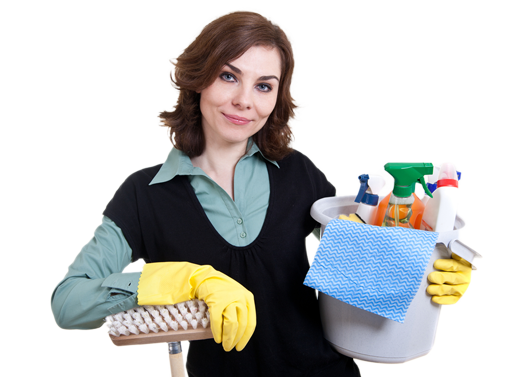Ultimate Guide to Jewelry Cleaning and Care
Posted on 20/06/2025
Ultimate Guide to Jewelry Cleaning and Care
Jewelry is more than just a beautiful accessory; it's an investment, a keepsake, and often, a treasured family heirloom. To retain its brilliance and longevity, proper jewelry cleaning and care are essential. In this comprehensive guide, discover the best practices for maintaining your favorite pieces -- from precious gemstones to delicate metals -- and ensure they shine for years to come.
Why Proper Jewelry Cleaning and Care Matters
Proper jewelry maintenance not only keeps your items looking stunning but also preserves their value and durability. Oils, lotions, sweat, and environmental pollutants can dull gemstones, discolor metals, and even weaken clasps or prongs. With regular upkeep, you can protect your jewelry from wear and tear, prevent damage, and keep every piece sparkling.
Key Benefits of Regular Jewelry Cleaning
- Maintains Luster: Remove daily build-up for a consistently vibrant look.
- Prevents Tarnish: Regular cleaning keeps tarnish and oxidation at bay, especially for silver pieces.
- Ensures Longevity: Prevents abrasive dirt from scratching or damaging delicate settings.
- Healthier to Wear: Removes bacteria and allergens that collect over time.
- Spotting Issues Early: Helps identify loose stones or damaged prongs before costly fixes are required.

Understanding Jewelry Materials and Their Unique Needs
Every type of jewelry -- from gold and silver to platinum and gemstone jewelry -- requires distinct care techniques. Knowing which cleaning methods are safe for each material will prevent accidental damage.
Metals
- Gold: Naturally tarnish-resistant but can lose shine due to build-up.
- Silver: Prone to tarnishing; needs frequent cleaning and storage in anti-tarnish conditions.
- Platinum: Resistant to most chemicals but can scratch or lose polish over time.
- Costume Jewelry: Features base metals and plating, requiring gentle techniques to avoid stripping.
Gemstones
- Diamonds: Durable yet attract oil and dirt easily.
- Sapphires & Rubies: Hardy stones, but sensitive to harsh chemicals.
- Opals, Pearls & Emeralds: Porous and delicate, needing the mildest cleaning agents.
Essential Jewelry Cleaning Techniques
Maintaining a regular cleaning routine is the key to keeping your jewelry collection in pristine condition. Here, explore the proven cleaning methods for various jewelry types.
General Jewelry Cleaning Steps
- Inspect: Before cleaning, examine pieces for loose stones, worn prongs, or broken links. Address issues with a professional jeweler before cleaning.
- Gather Supplies: Use a soft toothbrush or brush, mild dish soap, lukewarm water, and a lint-free cloth.
- Soak: Place jewelry in a small bowl with mild soapy water for a few minutes (avoid soaking soft stones).
- Brush Gently: Use a soft brush to clean crevices, prongs, and behind stones. Do not use abrasive brushes on delicate materials.
- Rinse and Dry: Thoroughly rinse pieces with clean lukewarm water. Pat dry using a lint-free cloth.
To ensure maximum shine, always handle jewelry with clean hands and avoid over-cleaning, as this can lead to wear and tear, especially for vintage or delicate items.
Specialized Methods for Cleaning Jewelry Types
How to Clean Gold Jewelry
- Mix a few drops of mild dish soap in lukewarm water.
- Gently soak your gold pieces for 15-20 minutes.
- Brush with a soft-bristled brush, focusing on crevices.
- Rinse thoroughly and dry with a clean, lint-free cloth.
Avoid using harsh cleansers, baking soda, or toothpaste on gold, as these can scratch or erode the metal.
How to Clean Silver Jewelry
- Use a specially formulated silver polish or a homemade cleaning solution (a few drops of mild dish soap in warm water).
- For heavier tarnish, create a paste of baking soda and water, apply gently with a cloth, then rinse well.
- When not in use, store silver in anti-tarnish bags or cloths to reduce oxidation.
Never use paper towels or tissues on silver--these can scratch the surface.
How to Clean Gemstone Jewelry
- For diamonds, rubies, and sapphires: Soak in mild soapy water, gently brush, and rinse.
- For opals, emeralds, pearls, or turquoise: Use only a damp soft cloth--never soak. Avoid chemicals and ultrasonic cleaners which can harm the stone.
- Store pearls flat, not hanging, and keep them separate from other jewelry to prevent scratches.
Cleaning Costume and Fashion Jewelry
Costume jewelry features non-precious metals and plated finishes, making it vulnerable to harsh chemicals and excessive moisture.
- Avoid soaking: Wipe gently with a soft, slightly damp cloth.
- Avoid soaps and chemicals: These may remove finishes and ruin the piece.
- Dry quickly: Ensure pieces are dried thoroughly after cleaning to prevent rust or tarnish.
Top Jewelry Care Tips for Long-Lasting Shine
Clean jewelry shines not only brighter but lasts longer. By adopting good jewelry care habits, you can preserve your pieces for years and even generations to come.
Dos and Don'ts of Jewelry Maintenance
- Do store pieces individually to prevent scratching and tangling.
- Don't expose jewelry to chemicals, lotions, perfumes, or hair sprays.
- Do remove jewelry before swimming, showering, or engaging in physical activities.
- Don't sleep with delicate or intricate jewelry on.
- Do schedule professional cleanings and check-ups, especially for valuable or heirloom pieces.
- Don't use abrasive cleaners, toothpastes, or bleach-containing products.
How to Store Jewelry Safely
- Use lined jewelry boxes or soft cloth pouches to protect against dust, scratches, and light exposure.
- For silver pieces, store in anti-tarnish bags or tissue.
- Keep pearls in a breathable pouch, as airtight containers can dry them out.
- Avoid storing jewelry in bathrooms, where humidity may accelerate tarnish, especially for silver and costume jewelry.
Traveling with Jewelry: Smart Packing Tips
- Pack valuable items in a travel jewelry organizer with separate compartments.
- Never check valuable jewelry in luggage; always carry it with you.
- For necklaces, fasten the clasp before packing to prevent tangling.
- Use a drinking straw or a jewelry roll to keep chains straight and tangle-free.
Professional Jewelry Cleaning Options
While many pieces can be cleaned at home, professional jewelers offer specialized services for deeper cleaning and repair:
- Ultrasonic Cleaning: High-frequency sound waves remove stubborn grime--safe for hard gems but not suitable for opals, pearls, or fragile stones.
- Steam Cleaning: Forces out dirt from difficult crevices.
- Polishing and Replating: Restores luster and removes light scratches from metals.
- Prong and Setting Checks: Ensure gemstones are secure and safe to wear.
Schedule a professional cleaning at least once a year, or more often for items worn daily, such as engagement rings or heirloom pieces.
Common Mistakes to Avoid When Cleaning Jewelry
- Using harsh chemicals like bleach or ammonia that can damage metals and gemstones.
- Soaking delicate stones (like emeralds, opals, and pearls) instead of wiping gently.
- Scrubbing with abrasives that can scratch precious surfaces.
- Ignoring repairs: Cleaning jewelry with loose stones or broken prongs can result in lost gems.
- Storing pieces together, running the risk of chips, scratches, or tangled chains.
The Best Tools and Products for At-Home Jewelry Cleaning
- Soft-bristled toothbrush: For gentle, effective scrubbing.
- Lint-free or microfiber cloths: For drying and polishing.
- Mild dish soap: Safe for most metals and gemstones.
- Specialty jewelry cleaning solutions: Always match the product to your jewelry material.
- Anti-tarnish strips: To reduce oxidization in jewelry boxes.
- Travel jewelry pouches and organizers: For safe storage and transport.
Pro Tip: Always read labels and test cleaning products on a small, inconspicuous area first to ensure safety.

Frequently Asked Questions About Jewelry Cleaning and Care
How often should jewelry be cleaned?
Jewelry worn daily (like wedding bands and favorite necklaces) should be cleaned every two weeks, while special occasion pieces can be cleaned monthly or as needed. Schedule professional cleaning once or twice a year for optimal care.
Is it safe to use toothpaste for jewelry cleaning?
Despite common myths, never use toothpaste to clean jewelry. Its abrasives may scratch metals and gemstones. Stick with mild dish soap, soft brushes, and jewelry-specific cleansers for effective, gentle cleaning.
Can all gemstones be cleaned the same way?
No. Hard gemstones like diamonds, rubies, and sapphires tolerate more robust cleaning, while soft, porous stones (like pearls, opals, turquoise, or emerald) must be cleaned carefully with only a damp cloth and never soaked.
How can I prevent tarnish on silver jewelry?
Store silver pieces in anti-tarnish bags, avoid exposure to air, humidity, and chemicals, and clean regularly. Wearing your silver jewelry frequently also helps prevent tarnish, as contact with skin oils has a protective effect.
Should I remove jewelry before handwashing or showering?
Yes, it's best to remove rings, bracelets, and all other jewelry before bathing or washing hands. Soaps and cleansers can leave residues or cause build-up, especially on stones and settings.
Final Thoughts: Cherish and Care for Your Jewelry Collection
If you want your jewelry to sparkle like new year after year, develop a thoughtful cleaning and storage routine using the steps outlined in this ultimate guide. With gentle daily habits and regular maintenance, your treasured pieces will retain their beauty and brilliance for generations to come.
If this jewelry care and cleaning guide helped you, share it with fellow jewelry lovers! For more expert tips on jewelry maintenance and care, follow our blog and keep your collection dazzling and protected.




